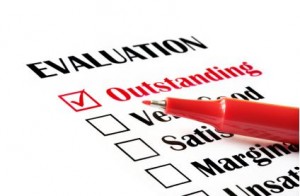 There are many benefits to a process for understanding what works best for student learning. It is important to work towards development of a body of knowledge of good practice. Schools want help identifying potential leaders and mentors to build quality practice. The public wants and needs a means of understanding what it takes to support quality education if we are to expect ongoing funding, advocacy and involvement.
There are many benefits to a process for understanding what works best for student learning. It is important to work towards development of a body of knowledge of good practice. Schools want help identifying potential leaders and mentors to build quality practice. The public wants and needs a means of understanding what it takes to support quality education if we are to expect ongoing funding, advocacy and involvement.
However, according to professionals in the field of teacher assessment, less than 6 percent of teachers actually perform at below standard levels. And for those who do need improvement, there is little evidence to suggest that evaluation in and of itself causes teacher growth. Our current model for teacher evaluation is born from, and perpetuates, a hierarchical, top down model. The result is a climate of anxiety, contempt and increased polarization.
What is needed instead is a means for identifying and strengthening what is working well and sharing this with other educators. Efforts like Teach to Lead (www.teachtolead.org) are moving towards developing a more self-reflective practitioner, which cannot be supported by top-down outsider rating.
In order for evaluation to be effective, it should allow for teachers to assess and document the quality of their teaching in ways that are most useful and relevant to them, while incorporating measures of qualities that support the needs and culture of the school.
Right/wrong, good/bad, better/worse measurements are less effective ways to promote learning. In fact, they could result in the dismissal of quality teachers or the over promotion of ineffective strategies. Teachers often dread evaluations as they are often subject to rater bias. Evaluations that carry punitive elements further distance teachers who may then distrust the evaluation and not provide as authentic an assessment as they would if they had more co-ownership of the process. Every inherent strength has a corresponding limitation. For instance, consider the teacher who is highly organized and structured. Lesson plans regularly occur according to schedule and rarely run over. Too much rigidity, however, may result in a teacher who is less capable of adapting to student interest or individual student needs.
Evaluation of any kind is always going to have an element of subjectivity, whether it stems from the bias of the evaluator themselves or if the tool reflects the bias of the funding source of the tool. An evaluator with a bias towards structure may rate the teacher above as high and teachers with a talent for creative and adaptable teaching styles will become engaged in a power struggle for recognition.
The most valuable evaluations for teachers and schools are those which promote self-determined learning and continuous improvement. They should be a part of a system that promotes self-reflection as well as the integration of applicable feedback.
Herein lies another challenge. Most of us are not trained in how to give or receive feedback. Poorly given feedback can result in defensiveness, fear or shame meaning that even valid information stands little chance of making a difference.
What constitutes poorly given feedback?
- Poorly organized feedback
- Feedback given without dialogue before or after observation
- Feedback that is not given constructively, rather is delivered in such a way as to create shame
- Feedback that is tied to compensation
- Feedback that relies on one-time observation that may occur on a day when performance was atypical
- Feedback given from someone with whom there is not a positive relationship
Teachers must also learn to receive feedback if they are to integrate the helpful elements into their practice. Many things can influence a person’s ability to remain objective when presented with another’s observations. If there is distrust in the observation process or in the system overall, if what is being measured does not reflect our philosophy or values of teaching it is hard to be open to the information. Our own anxieties and insecurities as well as our self-perception can also block us from considering the assessment fully.
Most of us fall victim to old stories or patterns when we hear critical information about our abilities. We protect ourselves from difficult feelings about the criticism by denying the information outright or accepting everything we are presented with without consideration. The golden rule of accepting feedback is to maintain a sense of curiosity and openness. This does not mean we need to accept everything to the point of feeling criticized but we want to learn to seek out data that will help us to grow as a professional.
Feedback is essential to honest personal and professional relationships. It helps us to connect us and our behavior to those around us. Learning to lean into the discomfort others’ perceptions of us is helpful in developing deeper personal and professional relationships and becoming a whole teacher, one that can accept and become excited about areas for growth while building on current strengths.
If you would like to learn more about how to give and received meaningful feedback, Click here to be taken to our courses which can help you learn to:
- Minimize judgement of self and others
- Become aware of your own emotional biases
- Regard evaluation with curiosity and with caution
- Be discerning of information without being dismissive.
